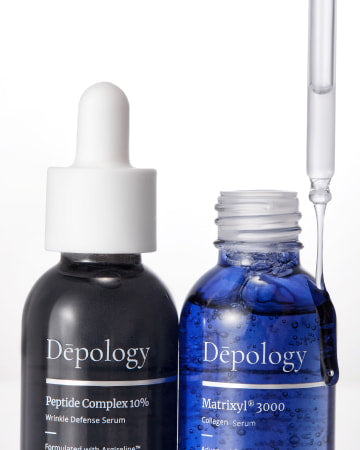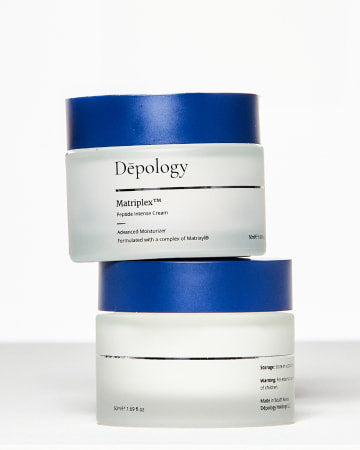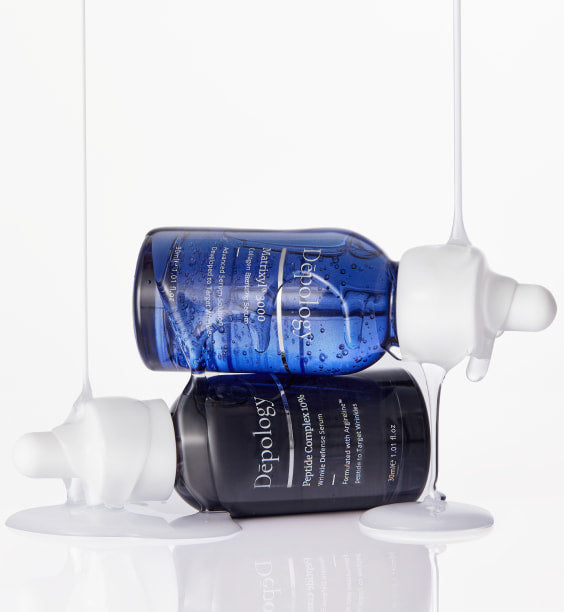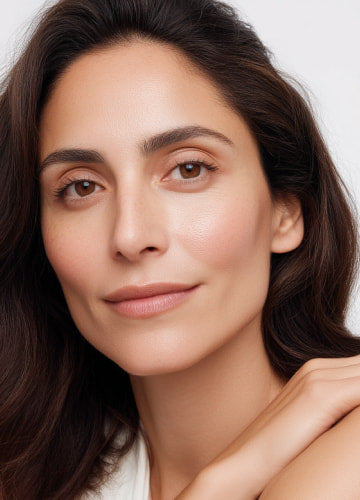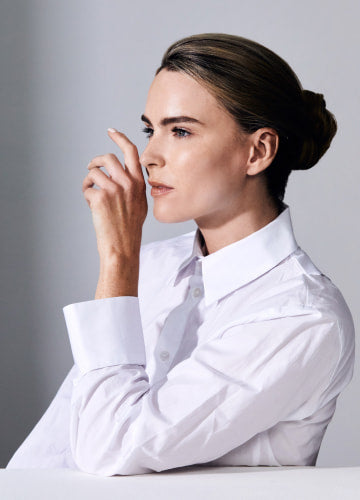
What is Meant By "Skin Flooding" ? - Benefits, Techniques, and More
Intro: What is “skin flooding”?
With over 50K views and counting on TikTok, “skin flooding” has preserved its spot in viral history, alongside others such as “skin cycling” and “skin slugging.” So, what is this trend that has gotten skincare enthusiasts around the world changing their regimens? This particular skincare method is all about moisturization (yes, this is different from hydrating the skin), as it incorporates layering multiple products to achieve the ultimate boost of rejuvenation. “Skin flooding” won’t only benefit your skin for the upcoming dry season, but you might stumble upon a few new tips and tricks (and products) along the expedition.
Are “skin streaming” and “skin flooding” the same?
Kind of, but not quite. “Flooding the skin” and “streaming the skin” both entail simplifying your skincare routine to three or four products to increase moisture in the skin’s protective barrier. “Skin streaming” involves the common use of a gentle cleanser, serum (recommended to be packed with antioxidants), moisturizer, and sunscreen during your AM routine. “Skin flooding” focuses more on the moisturizing effect of a routine, layering products on top of one another from thinnest to thickest to ensure adequate absorption of each product.
Generally, the idea is to focus on the quality, not the quantity of skincare products. Three or four powerful formulas is better than a ten-step routine of lackluster products that aren’t going to have the desired effects. “Skin flooding,” while not an entirely new concept in the industry, promotes and encourages healthy, hydrated, and moisturized skin.
What are the benefits of “skin flooding”?
The most appealing benefits of the trend are that it penetrates deep beneath the skin for enhanced hydration and is suitable for those of all skin types, especially those with sensitive skin and who are prone to conditions in the drier months. Though it might be tempting to assume those with oily skin don’t need a moisturizing routine, even those who produce excess sebum can still be dehydrated and require external care to maintain healthy skin. For these instances, incorporating moisturizing products that are non-comedogenic is recommended as these products won’t clog the pores.
How to do hydrating skincare or “skin flood”?
Hydrating your skin, especially during the drier winter months, is an essential aspect of a good skincare routine. Here are some tips for maintaining hydrated skin throughout the season while maintaining some of the “skin flood” concepts:
Gentle Cleansing
Utilizing a mild, hydrating cleanser to avoid stripping your skin of essential oils will ensure your skin retains its moisture even on the driest of days. Consider switching to a cream or oil-based cleanser, as these tend to wipe away impurities efficiently.
Opuntia-C™ Relief Cleansing Balm
“Skin flooding” is all about taking an old concept and rebranding it for the future, and this unique cleansing balm created from Korean cactus is no exception. Designed for those with sensitive skin in mind, the balm is meticulously formulated to gently remove impurities and makeup without causing further dryness or irritation. It is recommended to be applied two times a day, both in the morning and at night.
A powerful formula packed with avocado oil, vitamin E, and squalane, it is not only able to deeply moisturize beneath the epidermis but refuses to strip the skin of its natural oils, leaving you ready to take on the rest of your routine. Always be sure to thoroughly rinse off the balm with lukewarm water before moving on in your routine.
Hydrating Serums
Incorporate a hydrating serum with ingredients like hyaluronic acid or glycerin, applying the serums before your moisturizer to boost hydration in the skin.
Rich Moisturizer
Opt for a richer, creamier moisturizer in the winter to provide extra hydration where it’s needed. Keep an eye out for products containing ingredients such as shea butter and ceramides.
Hydrating Masks
Use hydrating masks once or twice a week for an extra boost of moisture. Overnight masks can provide even deeper hydration while you sleep.
Pro-Firming Matrixyl® 3000 + Dynalift™ Night Mask
Our staple ingredient, Matrixyl® 3000 has joined together with Dynalift™ to produce only the most effective night mask for your skin-firming and hydration needs. This overnight mask is specially formulated to not only restore elasticity in the skin but leave you with a smoother appearance all the while providing ample moisturization, acting as a cream-mask hybrid.
To reap the most benefits of this overnight mask, you should always first cleanse the skin of impurities to not further aggravate your skin’s barrier. This mask can be used as the final step in a skincare routine and be left applied on the face overnight, allowing the cream texture to fully absorb. If desired, you may also follow this product with other moisturizing products. You can even use the product every day as necessary, not having to worry about excessive use.
Sunscreen
Even in the cold season, it’s highly advised to continue using a broad-spectrum sunscreen with at least SPF 30, especially if you'll be outdoors. Once snow settles on the ground, the sunlight reflects onto the skin, making skin and eye protection even more important during the winter months.
How do you know if your skin is “overhydrated”?
Determining whether your skin is "overhydrated" can depend on various factors, and it's essential to consider both the signs and your skin type. Here are some indicators that your skin may be overhydrated:
- Texture Changes: If your skin feels excessively soft, looks swollen, or has a more "doughy" texture, it might be a sign of overhydration.
- Increased Breakouts: Overhydration could potentially lead to an increase in breakouts, as pores may become clogged due to excess moisture.
- Sensitivity: Overhydrated skin may become more sensitive or prone to irritation.
- Shiny Appearance: If your skin appears consistently shiny or feels greasy, it could be a sign of excess moisture.
- Product Absorption Issues: If your skin is overhydrated, it might have difficulty absorbing skincare products. If you notice that your usual products aren't being absorbed or are sitting on the skin, it could indicate overhydration.
- Skin Conditions: Individuals with certain skin conditions, such as eczema or dermatitis, may experience worsened symptoms if their skin becomes overhydrated.
How often should you “skin flood”?
As with every new skincare trend on social media, everything works well in moderation. How often you should “skin flood” heavily depends on your skin type and how your skin reacts to the process overall. It can also depend on if your skin reacts negatively to an allergen, forcing you to rethink your routine with a safer product.
Those who are prone to acne, especially in the winter months, should also proceed with caution when starting their “skin flooding” or “skin streaming” routines. Excessive layering or skin piling of various products can sometimes lead to increased sensitivity, redness, and breakouts, so you should cease the use of the product immediately if you feel your skin is having adverse reactions to its application.
Conclusion
There is no one answer in skincare, even when it comes to “skin flooding.” Think of the layering trend as a new workout routine. You may want to change it up and not do it the same every time. You may find that it’s not working for you like it’s working for others and that’s normal. If you sense any doubt, it’s best to consult with a dermatologist so they can recommend a personalized skincare routine that best fits your skin’s needs. It's always preferred to get a professional opinion rather than attempting to rock the boat, especially when it comes to your skin's health.
People also ask:
Is “skin flooding” bad?
“Skin flooding” is quite the opposite. The trend has been advocated for its promotion of healthy and essential hydration of the skin. With the winter months sneaking up on us, it’s more important now to get ahead of the dry season and prepare our skincare routines accordingly with hydrating and moisturizing skincare ingredients.


